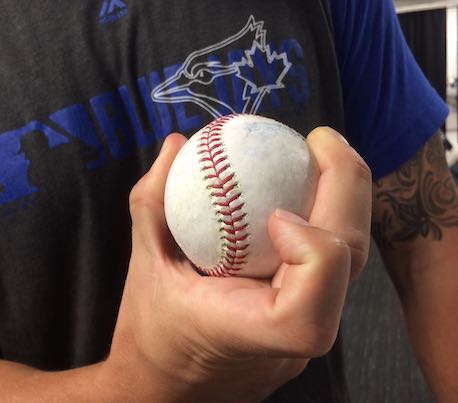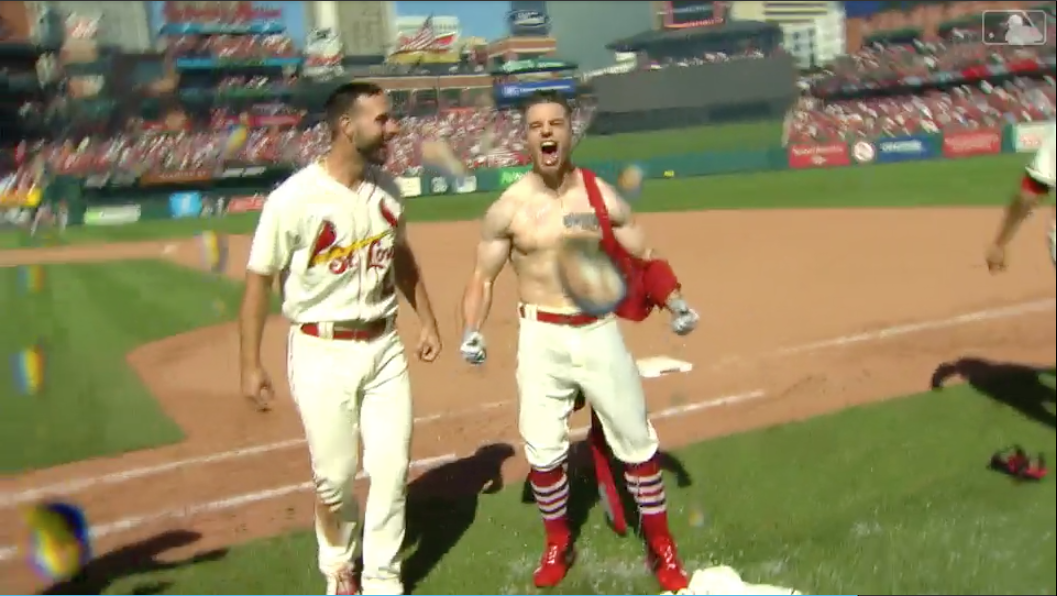Jack Flaherty Is Reaching His High Expectations
Before the season started, expectations for Jack Flaherty were pretty high. After posting a 3.86 FIP, a 3.34 ERA, and 2.4 WAR in 151 innings in his first full season in 2018, projections expected Flaherty to be even better with a 3.74 FIP. After a rough start in Seattle on July 2 in which Flaherty failed to make it out of the fifth inning by walking four and giving up four runs including a homer, the season looked to be a step back rather than a step forward. With a 4.82 FIP and 4.90 ERA on the year, Flaherty’s stats represented a half season of below-average numbers.
Since then, he’s been one of the best pitchers in baseball.
| Name | IP | K% | BB% | HR/9 | BABIP | LOB% | ERA | FIP | WAR |
|---|---|---|---|---|---|---|---|---|---|
| Justin Verlander | 31 | 44.9 % | 5.1 % | 0.9 | .286 | 91.4 % | 1.45 | 1.64 | 1.7 |
| Noah Syndergaard | 35.1 | 27.9 % | 5.7 % | 0.0 | .293 | 75.0 % | 1.78 | 1.77 | 1.6 |
| Jack Flaherty | 38.1 | 34.3 % | 7.0 % | 0.5 | .210 | 95.6 % | 0.94 | 2.20 | 1.6 |
| Jacob deGrom | 33 | 34.4 % | 7.8 % | 0.3 | .301 | 91.8 % | 1.09 | 1.85 | 1.5 |
| Lance Lynn | 40 | 33.7 % | 7.4 % | 0.9 | .319 | 79.2 % | 2.70 | 2.74 | 1.5 |
| Patrick Corbin | 35.1 | 31.3 % | 7.5 % | 0.5 | .364 | 78.2 % | 3.06 | 2.28 | 1.3 |
| Shane Bieber | 37 | 28.7 % | 4.9 % | 0.5 | .278 | 73.1 % | 2.92 | 2.51 | 1.3 |
| Charlie Morton | 36 | 28.2 % | 5.4 % | 0.8 | .333 | 69.6 % | 4.00 | 2.63 | 1.3 |
| Reynaldo Lopez | 31.2 | 25.4 % | 8.2 % | 0.3 | .291 | 77.1 % | 2.56 | 2.71 | 1.2 |
| Gerrit Cole | 40 | 37.1 % | 6.0 % | 1.6 | .228 | 99.2 % | 2.25 | 3.37 | 1.1 |
| Clayton Kershaw | 31 | 32.3 % | 9.7 % | 0.6 | .243 | 88.7 % | 1.74 | 2.64 | 1.1 |
| Matthew Boyd | 31 | 34.9 % | 7.8 % | 1.2 | .319 | 73.3 % | 4.06 | 3.06 | 1 |
| Yu Darvish | 29 | 33.9 % | 1.8 % | 0.9 | .273 | 87.2 % | 2.17 | 2.46 | 1 |
As for what happened, here’s a brief comparison of his numbers over the last month versus the first three months of the season.
| IP | K% | BB% | HR/9 | HR/FB | BABIP | LOB% | P/PA | ERA | FIP | |
|---|---|---|---|---|---|---|---|---|---|---|
| Through 7/2 | 90 | 26.4% | 8.1% | 1.9 | 20.9% | .288 | 74.4% | 4.22 | 4.90 | 4.82 |
| 7/7-8/7 | 38.1 | 34.3% | 7.0% | 0.5 | 5.7% | .210 | 95.6% | 4.01 | 0.94 | 2.20 |
We can see from the BABIP and LOB% that there’s probably some luck going on here with the sub-1.00 ERA, and even if there’s a little bit of luck on the home run rate, his 2.20 FIP wouldn’t be impacted that much. A decrease in homers might be luck evening out, but a big increase in strikeouts while seeing the walks go down shows that there’s clearly more than chance that’s pushing Flaherty to great results. It’s not the opponents either, as two of his six starts have come against the two best offenses in the game in the Astros and Dodgers, with the Cubs boasting a top-six offense as well. The biggest change is more fully embracing his best pitch, the slider. Read the rest of this entry »


